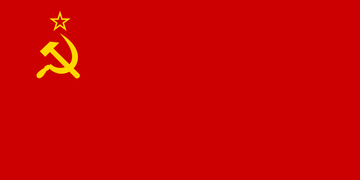Red Army
1917-1991 | Military Unit
The Workers' and Peasants' Red Army (Russian: Рабоче-крестьянская Красная армия (РККА), Raboche-krest'yanskaya Krasnaya armiya (RKKA), frequently shortened in Russian to Красная aрмия (КА), Krasnaya armiya (KA), in English: Red Army, also in critical literature and folklore of that epoch – Red Horde, Army of Work) was the army and the air force of the Russian Soviet Federative Socialist Republic, and, after 1922, the Union of Soviet Socialist Republics. The army was established immediately after the 1917 October Revolution (Red October or Bolshevik Revolution). The Bolsheviks raised an army to oppose the military confederations (especially the various groups collectively known as the White Army) of their adversaries during the Russian Civil War. Beginning in February 1946, the Red Army, along with the Soviet Navy, embodied the main component of the Soviet Armed Forces; taking the official name of "Soviet Army", until its dissolution in December 1991.
Subject ID: 82013
MoreThe Workers' and Peasants' Red Army (Russian: Рабоче-крестьянская Красная армия (РККА), Raboche-krest'yanskaya Krasnaya armiya (RKKA), frequently shortened in Russian to Красная aрмия (КА), Krasnaya armiya (KA), in English: Red Army, also in critical literature and folklore of that epoch – Red Horde, Army of Work) was the army and the air force of the Russian Soviet Federative Socialist Republic, and, after 1922, the Union of Soviet Socialist Republics. The army was established immediately after the 1917 October Revolution (Red October or Bolshevik Revolution). The Bolsheviks raised an army to oppose the military confederations (especially the various groups collectively known as the White Army) of their adversaries during the Russian Civil War. Beginning in February 1946, the Red Army, along with the Soviet Navy, embodied the main component of the Soviet Armed Forces; taking the official name of "Soviet Army", until its dissolution in December 1991.
Subject ID: 82013
Subject ID: 82013
